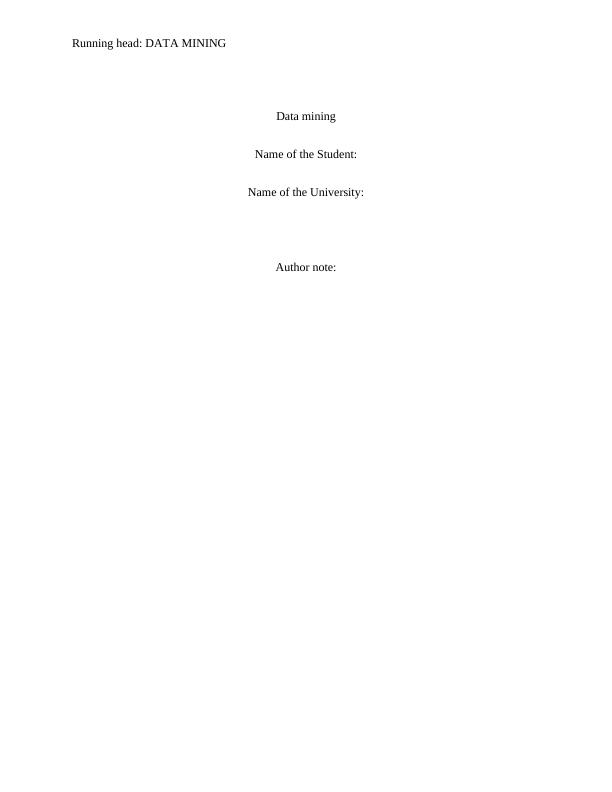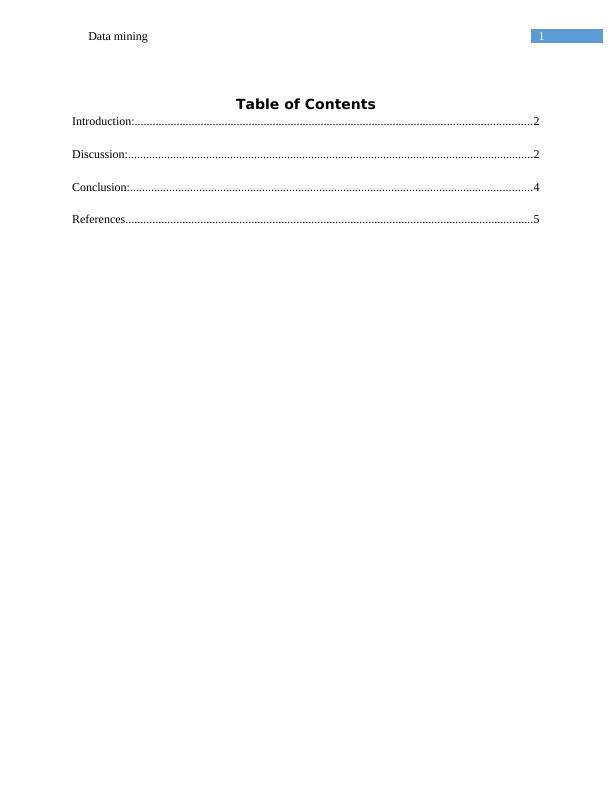Data Mining - Definition, Stages, Advantages and Drawbacks
7 Pages1250 Words290 Views
Added on 2023-06-04
About This Document
This article discusses the definition, stages, advantages, and drawbacks of data mining. It explains how data mining is used to extract useful information from large data sets and how it benefits society, government, and businesses. It also highlights the issues of privacy, security, and misuse of data that need to be addressed. The article cites relevant sources to support the discussion.
Data Mining - Definition, Stages, Advantages and Drawbacks
Added on 2023-06-04
ShareRelated Documents
End of preview
Want to access all the pages? Upload your documents or become a member.
ICT370 Data Analytics PDF
|32
|1636
|25
(Solved) Data Mining Process - PDF
|18
|2339
|324
Data Mining - Practical Machine Learning Tools and Techniques
|6
|1535
|230
Blog Writing: Data Mining
|9
|2725
|169
Case Study on Data Mining in the Finance Industry
|11
|2479
|43
Techniques of Predictive Analysis | Study
|3
|2209
|51



